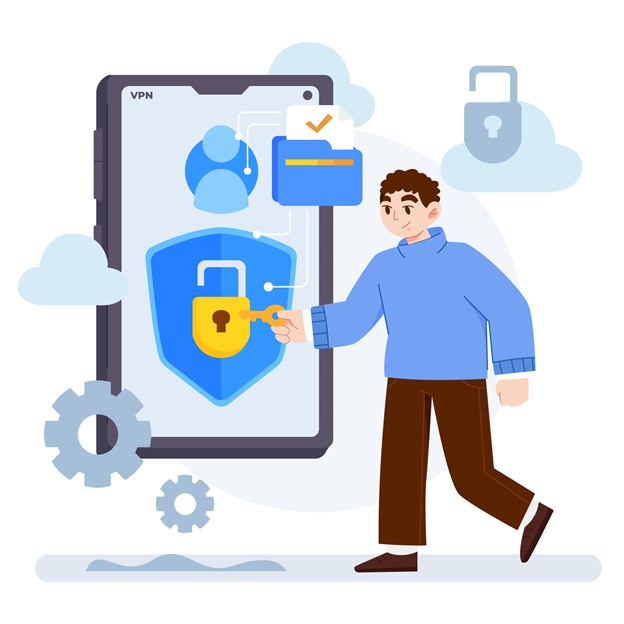Tracking Suspicious Activity: How VPNs and Emerging Technology Are Changing the Game
When it comes to cybersecurity, privacy isn’t just a basic right; it’s a weapon. Why? Because the question isn’t whether someone can hide online, but whether we can tell who’s hiding for the right reasons.
We’ve all been there. You’re monitoring your systems, and something feels….off. Maybe it’s that IP address hitting your login page at 2 AM with mechanical precision or the user who suddenly needs their password reset from three different countries in one hour. Your gut tells you something’s wrong, but proving it? That’s where things get complicated.
The old rules for tracking suspicious activity have been entirely changed today. We can no longer just mark IP addresses that don’t look right and call it a day.
The threats we face today are like an elegant game of digital hide-and-seek. Privacy tools that were meant to protect real users have turned into the best hiding places for bad guys. However, here’s the thing: we’re not helpless in this new environment. As the problems have changed, so have the tools and methods we use to solve them. So let’s explore them together, shall we?
Let’s go!
Why traditional red flags don’t work anymore?
Remember when spotting fishy activity was straightforward? Multiple failed login attempts from the same IP, unusual download patterns, or sudden changes in user behavior—these were our reliable indicators. If we saw these signals, we knew we had a problem.
Those days feel almost quaint now, don’t they?
Right now, cybercriminals aren’t just technically cultivated; they’re strategically smart. They understand how our detection systems work, and they’ve learned to game them. They use residential proxies that make their traffic look like it’s coming from legitimate home users. They employ AI to generate believable user profiles and mimic natural behavior patterns. They even time their activities to blend in with normal business hours in their target’s time zone.
The result? Traditional security systems are fighting yesterday’s war with yesterday’s weapons. We’re looking for obvious signals in reality where the most dangerous threats have learned to whisper instead of shout.
The paper trail revolution that everyone misses
While everyone’s focused on IP addresses and user behavior, there’s another frontier that’s often overlooked: the documents themselves. Every PDF, Word file, and image carries a hidden story in its metadata—creation timestamps, editing history, device fingerprints, and software signatures that can reveal far more than their visible content.
This situation is where tools like Smallpdf password remover become invaluable for security professionals. While its primary function helps users regain access to locked documents, it serves a deeper purpose in cybersecurity investigations. When analysts encounter suspicious documents shared in questionable contexts, being able to bypass unnecessary encryption allows them to examine the full forensic picture—hidden scripts, altered signatures, or metadata that reveals that document’s true origins and intent.
Documents don’t lie, even when their creators try to make them. A PDF that claims to have been created last week but has metadata showing it was generated months ago raises questions. An image that’s been through multiple editing cycles when it should be original tells a story. A Word document with tracked changes that reveal malicious intent becomes evidence of premeditation.
The key is understanding that in our digital sphere, every file is a potential witness. The challenge is learning how to make them talk.
The VPN dilemma? Or when privacy tools become shields for bad actors
Here’s where things get really interesting—or really complicated. VPNs represent one of the most significant challenges in modern cybersecurity, not because they’re inherently malicious, but because of their dual nature.
Think about it from both sides. For a journalist in a restrictive regime, a VPN is a lifeline that enables free speech and protects sources. For a remote worker accessing company systems from a coffee shop, it’s essential security hygiene. These are legitimate, important uses that we absolutely want to support.
But that same technology that protects the vulnerable also shields the malicious. Fraudsters use VPNs to mask their true locations, making it nearly impossible to track patterns across different attacks. Cybercriminals leverage them to bounce their activities across multiple jurisdictions, complicating legal responses. Bad actors exploit them to appear as legitimate traffic while conducting reconnaissance or data exfiltration.
So, how do we solve this puzzle? The answer isn’t to ban or block VPNs—that would be throwing the baby out with the bathwater. Instead, we need to look deeper than just the VPN itself and examine the context around its use.
Real-time intelligence powers modern detection
If you want to see the future of suspicious activity detection, look at what’s happening in anti-money laundering (AML) systems. These platforms have had to solve the exact challenge we’re all facing: identifying questionable behavior in real-time without drowning in false positives.
According to SEON’s article on AML case management, modern AML systems have evolved far beyond simple rule-based filtering. They now incorporate behavioral analytics, device intelligence, and machine learning to create wide risk profiles that update in real-time. When someone logs in from a VPN, changes their email address, and initiates a large transaction within minutes, the system doesn’t just log these events—it understands their relationship and significance.
This holistic approach is what makes the difference. Instead of treating each dubious indicator as an isolated event, advanced AML platforms weave them together into a coherent narrative. They consider not just what happened, but when it happened, how it happened, and what other events preceded or followed it.
The insights from AML technology are applicable far beyond financial services. Any organization dealing with user accounts, transactions, or sensitive data can benefit from this integrated approach to threat detection—something that’s echoed in Cybersecurity News’ analysis of infrastructure-based pattern detection, where mapping threat actor infrastructure helps uncover coordinated campaigns and shared tactics.

Beyond code and the human element (that still matters)
Here’s something that might surprise you: despite all our technological advances, the most successful cyberattacks still rely on the oldest trick in the book—manipulating people.
Social engineering hasn’t become obsolete; it’s become more refined. Modern attackers don’t just send obvious phishing emails anymore. They research their targets on social media, craft personalized messages that reference real events and relationships, and create urgency around situations that feel entirely plausible.
What does this mean for suspicious activity tracking? It means we need to watch for behavioral anomalies that go beyond technical indicators:
- Communication changes: employees’ whole writing style or interaction patterns suddenly shift
- Access requests: users who need elevated permissions for projects no one’s heard of
- Timing anomalies: activities that happen outside normal patterns without a clear business justification
This is where technology and human intuition need to work together. Automated systems can flag unusual patterns, but it takes human judgment to understand the context and intent behind them.
The art of behavioral fingerprinting
This brings us to one of the most fascinating developments in cybersecurity: behavioral fingerprinting. Instead of relying solely on traditional identifiers, we’re learning to recognize users by how they interact with systems.
Consider how you use your computer. Do you scroll quickly or slowly? How long do you pause between clicks? Do you use keyboard shortcuts or rely on the mouse? These micro-behaviors create a unique pattern that’s remarkably difficult to replicate, even when someone has stolen your credentials.
Modern detection systems track these subtle indicators, including typing patterns, navigation behavior, and device characteristics. The beauty of behavioral fingerprinting is that it’s incredibly challenging for attackers to fake convincingly. They might steal passwords or spoof IP addresses, but replicating someone’s unconscious interaction patterns requires a level of complexity that’s currently beyond most threat actors.
Looking ahead, and the balance we must strike
As we advance into this new era of threat detection, we’re walking a tightrope between two fundamental needs: the right to privacy and the necessity of security. This isn’t a zero-sum game, but finding the right balance requires thoughtful consideration and innovative approaches.
The future likely lies in technologies that can verify intent without compromising individual privacy. We’re already seeing promising developments in areas like zero-knowledge proofs and decentralized identity systems that may allow us to establish trust without exposing personal information.
Moving forward in an evolving setting
The reality is that we’ll never achieve perfect detection. Threats will continue to evolve, new evasion techniques will emerge, and we’ll constantly need to adapt our approaches. But that’s not a reason for pessimism; it’s an opportunity for continuous improvement.
The organizations that thrive embrace adaptability. They engage in several activities, such as purchasing systems that can learn and adapt over time, training teams to think like both attackers and defenders, and collaborating with technology companies and security researchers.
Lastly, they know that cybersecurity isn’t just about stopping bad things from happening; it’s also about making sure that good things can happen safely.
The game between threats and defenders will never end, but we can get better at playing it. With the right tools, techniques, and mindset, we can build a more secure digital future for everyone.




